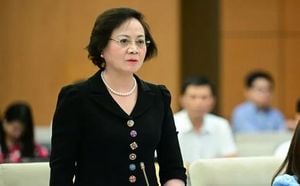On Wednesday, May 7, 2025, Brazil and the United States will simultaneously redefine their interest rates, a significant event referred to as Super Quarta. This dual adjustment is particularly impactful as both nations navigate economic pressures and inflationary concerns.
The Selic, Brazil's basic interest rate, is determined by the Monetary Policy Committee (Copom) of the Central Bank, which comprises its president and directors who convene every 45 days. Currently, the Selic stands at 14.25% per year, but experts anticipate a rise of 0.5 percentage points, pushing it to 14.75%. This would mark the highest level since August 2006.
In the United States, the Federal Open Market Committee (FOMC) is expected to maintain interest rates between 4.25% and 4.5% per year. This decision will have ripple effects on prices, travel, and investments, as the market braces for the Copom's announcement.
Analysts predict that this could be the last increase in the current cycle of rate hikes, which has seen the Selic rise from 10.5% in September 2024 to its current level. The ongoing increase is primarily driven by surging prices in food and energy, with the latest inflation projection for the IPCA in 2025 set at 5.53%, significantly above the National Monetary Council's target of 3%.
As the Copom prepares to meet, there are indications that the global economic landscape, characterized by uncertainties and potential disruptions in trade, will influence their decision-making process. The committee has been vocal about the need for caution and flexibility, as noted by Marco Antonio Caruso, an economist at Santander, who emphasizes the importance of reducing the pace of increases amid persistent inflation expectations.
In the run-up to the decision, the dollar has experienced a slight increase, opening at R$ 5.73 on May 7, up from R$ 5.71 the previous day. This fluctuation is being closely monitored, as the market anticipates the Copom's decision, which is likely to be announced later in the day.
Financial experts are advising investors to consider fixed-income investments, particularly those with longer maturities, as the Selic is expected to plateau before potentially decreasing. The American bank JPMorgan forecasts that Brazil's Selic could drop to 9.75% by December 2026, suggesting a shift in the monetary policy landscape.
Investors are encouraged to focus on fixed-income securities that lock in current high rates, such as Treasury Letters (LTNs) and private credit securities (CRIs, CRAs, debentures). These investments are seen as safer bets in a climate of rising rates, with options offering returns between 11% and 12% for maturities exceeding two years.
Moreover, LCI and LCA, which are exempt from income tax, present another attractive avenue for investors, although their profitability must be carefully compared to the CDI. Financial analysts recommend maintaining a diversified portfolio that includes both fixed and variable-income options to mitigate risks associated with changing interest rates.
As the Copom's meeting concludes, the outcome will not only shape Brazil's monetary policy for the immediate future but will also reflect the complex interplay of domestic inflation and international economic pressures. The decision is expected to have lasting implications for consumers and businesses alike, influencing everything from loan rates to investment strategies.
The anticipation surrounding Super Quarta underscores the critical role that central banks play in managing economic stability and growth. As the day unfolds, all eyes will be on the Copom's announcement, which could signal the end of an era of aggressive rate hikes and the beginning of a new chapter in Brazil's economic narrative.






